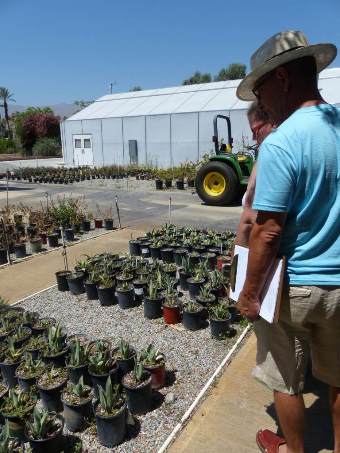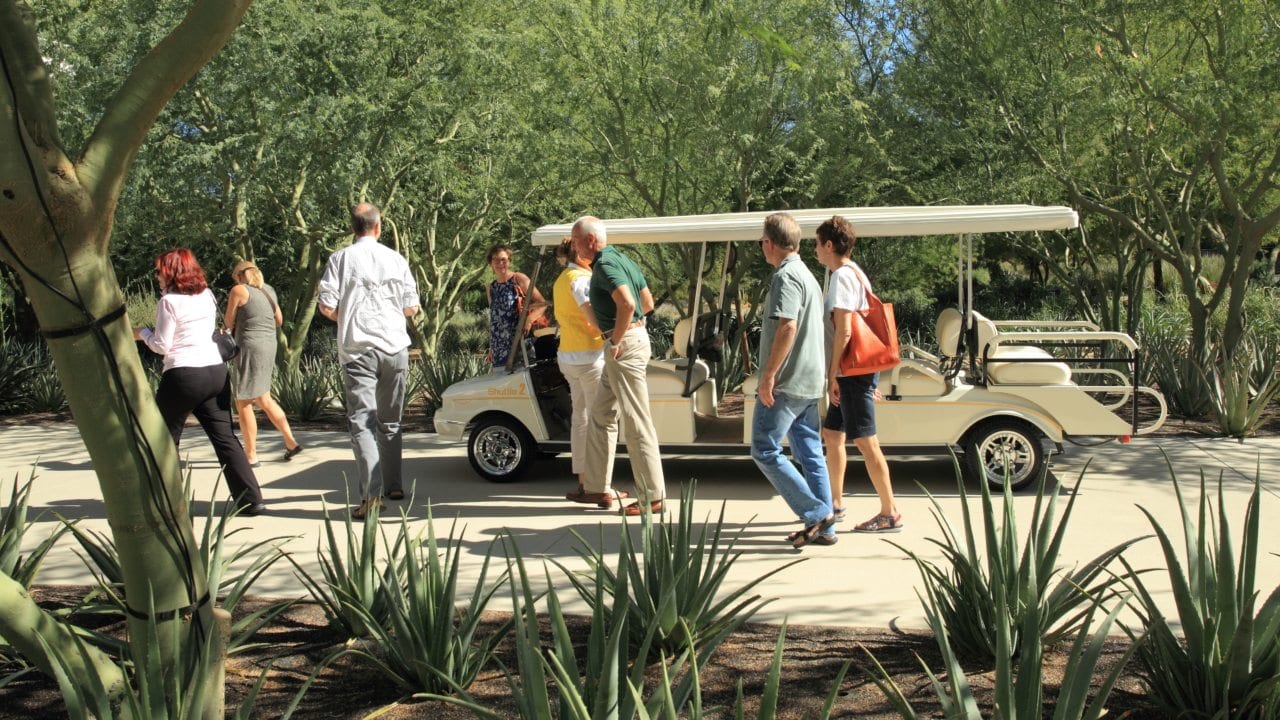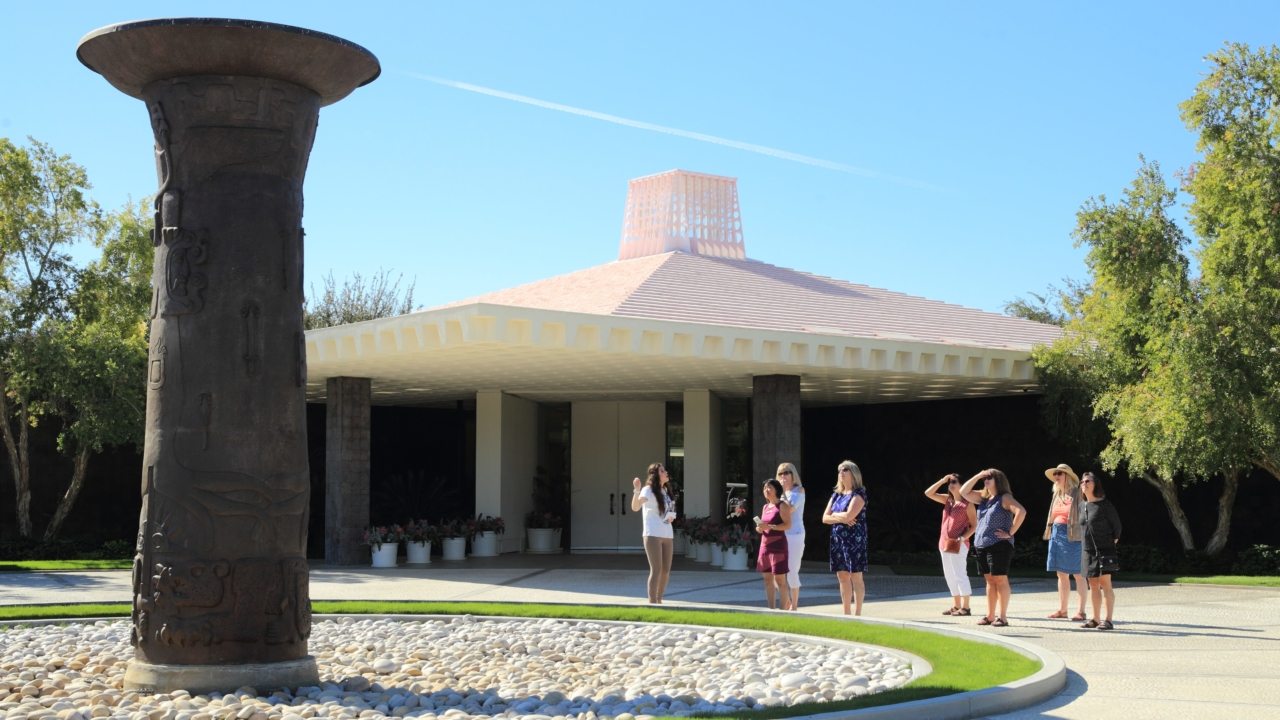Sunnylands Plants to Help Palm Springs High Conserve Water
Water conservation and sustainable living in the desert are important to the mission of The Annenberg Retreat at Sunnylands. Prior to opening in 2012, Sunnylands implemented several programs to lower the amount of water and energy used on the property. These include the planting of gardens with arid resistant plants, changing 60-acres of turf to mulch and meadow grass, and building a solar field and geothermic system for the Center building. The organization takes seriously environmental responsibility and is committed to creative and innovative solutions in sustainability.
“We see Sunnylands as a living laboratory where we can try new systems and determine how best to conserve water and other natural resources in this desert climate,” says Michaeleen Gallagher, director of education and environmental programs. “As noted in our green vision statement, our goal is to share our environmental experiences with the public.”
Earlier this summer the Desert Horticulture Society contacted Sunnylands for possible assistance on a landscape project at the Palm Springs High School. Sunnylands Grounds Superintendent Drew Kerr made available agave and yucca wipplei plants to help them create a sustainable landscape. Kerr also contacted College of the Desert Professor Jeff Place with an idea that may benefit all parties.
In spring 2014, working in the Sunnylands Gardens under Professor Jeff Place, several COD agricultural students harvested agave pups, offshoots taken from the base of the mother plants. The students brought the pups back to the college’s campus where they are raising them into mature plants. Originally the plan was for these plants to return to Sunnylands to be used in the Gardens as needed. Instead, Kerr suggested the pups go to Palm Springs High’s project.
“Sunnylands is available for projects, such as the one with the Desert Horticulture Society, and as a resource for the implementation of water-saving landscapes,” Kerr says.
Palm Springs High School is one of the top water users in the Coachella Valley, says Lisha Astroga, a volunteer at Palm Springs High School and special events coordinator for the Desert Horticultural Society. She explains that schools often have high water usage in part because of the large athletic fields that need watering. Astroga started a sustainable garden at the high school to educate students about gardening and desert sustainability.
When Israel Ibarra, the school’s grounds keeper, noticed how well the garden flourished with very little maintenance, he discussed his observations with Astroga. Their conversation evolved into the creation of a desertscape at Palm Springs High School.
Thus far, the Desert Horticultural Society has relandscaped parts of the school campus, with the corner of Ramon Road and Farrell Drive being the most visible. The project also provides a way to teach Palm Springs High School students and faculty, and the Palm Springs community about the advantages of using desert native plants.
“We applaud the work of the Desert Horticulture Society on the Palm Springs High School project,” Kerr says. “And we look forward to other projects in the Valley.”




